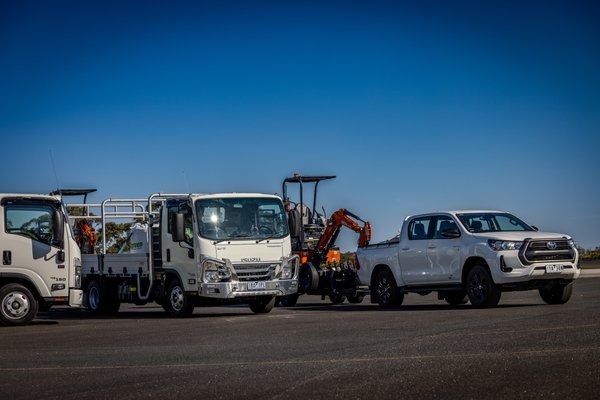Isuzu Australia Limited (IAL) recently invited Fleet HV News to Holden’s former testing facility at Lang Lang in Victoria, to put its car licence-suitable N Series trucks head-to-head with a Toyota HiLux.
The aim of the test was to see how a light-duty truck stacks up against one of Australia’s most popular dual-cab utes, because on paper the N Series is miles ahead. Of course, being a truck the Isuzu isn’t quite as comfortable, quiet or liveable compared with a ute.
Before reading any further, we recommend reading our commercial vehicle terminology guide here.
So, how do they stack up?
Isuzu brought an array of their N Series trucks along, but for the purpose of a fair test we opted to drive the NPR 45-155 Tradepack model priced from $72,000 plus on-road costs – not much more than the Toyota HiLux we compared it to, or any high-end dual-cab for that matter.
The NPR has a GVM of 4500kg, which is the cut-off for a regular car licence, and a massive 9000kg GCM. This means that even with a 4500kg trailer behind it, the N Series truck can carry a full 1700kg load in its tray.
By comparison, the HiLux has a GVM of 3050kg and a GCM of 5850kg – which is on-par with other popular dual-cab ute options. Most dual cab utes, like this HiLux, can tow a maximum 3500kg, but with the towing capacity maxed out and with a driver onboard they are typically left with around half of their usual payload.
See, when calculating available payload when towing, you are required to subtract the trailer weight, vehicle tare weight and the weight of any accessories and passengers from a vehicle’s total GCM. With a GCM of around 6000kg and a tare weight of roughly 2000kg, most dual-cab utes are left with 500kg-or-so when towing at their maximum 3500kg limit…and that’s before you subtract the weight of occupants and accessories.
In other words, if you plan to tow and carry a load at the same time – a truck is king.
But how do they compare on the road? Watch our video below to find out…






